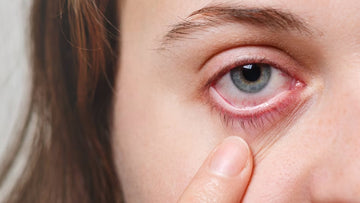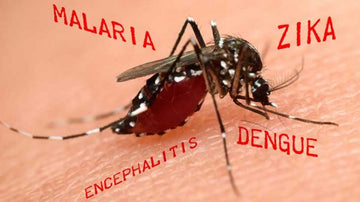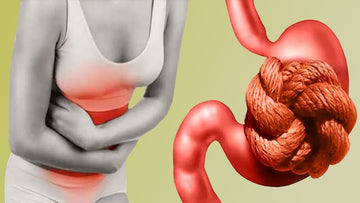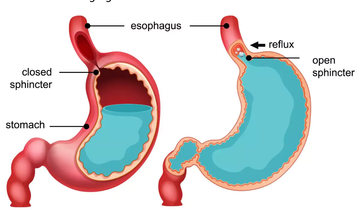What are chronic eyes disease? How they are cured with the help of ayurveda?
by Dr Vaid Ji on Oct 09, 2024

Chronic eye diseases are long-term conditions that can lead to progressive damage to the eyes and impair vision over time. These diseases can affect different parts of the eye, including the retina, optic nerve, and cornea. Many chronic eye conditions, if left untreated, can lead to partial or complete loss of vision. Some common chronic eye diseases include:
Common Chronic Eye Diseases:
-
Glaucoma
- Description: A condition that damages the optic nerve, often associated with elevated intraocular pressure (IOP). It can lead to blindness if not managed.
- Symptoms: Gradual loss of peripheral vision, eye pain, blurred vision, halos around lights.
-
Cataracts
- Description: Clouding of the lens in the eye, leading to decreased vision. It typically develops slowly and can affect one or both eyes.
- Symptoms: Blurred or dim vision, difficulty seeing at night, sensitivity to light, seeing "halos" around lights.
-
Macular Degeneration
- Description: A progressive condition affecting the macula (the central part of the retina), causing central vision loss. It is more common in older adults.
- Symptoms: Blurred central vision, difficulty recognizing faces, difficulty reading.
-
Diabetic Retinopathy
- Description: A complication of diabetes that affects the blood vessels of the retina, potentially leading to blindness.
- Symptoms: Blurred vision, floaters, dark areas of vision, and difficulty perceiving colors.
-
Dry Eye Syndrome
- Description: A condition where the eyes do not produce enough tears or the tears evaporate too quickly, leading to dryness and discomfort.
- Symptoms: Burning, itching, redness, and blurred vision.
-
Uveitis
- Description: Inflammation of the uvea (middle layer of the eye). It can result from autoimmune disorders or infections.
- Symptoms: Eye redness, pain, sensitivity to light, blurred vision.
-
Retinitis Pigmentosa
- Description: A genetic disorder that causes the gradual breakdown of the retina, leading to night blindness and loss of peripheral vision.
- Symptoms: Night blindness, tunnel vision, loss of peripheral vision.
Ayurvedic Approach to Curing Chronic Eye Diseases
In Ayurveda, eye health is linked to "Pitta Dosha", especially the subdosha called Alochaka Pitta, which governs vision. Ayurveda focuses on balancing the doshas and addressing the root cause of the disorder, not just the symptoms. Treatments often involve herbal remedies, lifestyle changes, dietary recommendations, detoxification techniques (Panchakarma), and external therapies.
1. Herbal Remedies
Ayurvedic herbs help detoxify, reduce inflammation, improve blood circulation, and restore balance to the doshas.
- Triphala: A powerful herbal formula made of three fruits (amla, bibhitaki, haritaki) used to cleanse and rejuvenate the eyes. Triphala can be taken internally or used as an eye wash.
- Amalaki (Amla): Rich in Vitamin C, Amla is a potent antioxidant that improves eye health and can help slow the progression of cataracts and other degenerative eye diseases.
- Ghee (Clarified Butter): Traditionally used to nourish the eyes and alleviate dryness. Applying medicated ghee (like Triphala ghee) around the eyes or consuming it can improve vision.
- Punarnava (Boerhavia diffusa): Known for its anti-inflammatory properties, Punarnava helps in reducing eye inflammation and supports kidney and liver health, which are linked to eye health.
- Turmeric (Curcumin): Its anti-inflammatory and antioxidant properties help in managing conditions like diabetic retinopathy and glaucoma.
- Saptamrit Lauh: A classical Ayurvedic medicine that supports eye health, used in the treatment of chronic eye conditions like cataracts, glaucoma, and retinal diseases.
2. Eye Cleansing (Netra Tarpana)
- Description: Netra Tarpana is a specialized Ayurvedic eye therapy where medicated ghee is retained around the eyes in a dough ring for a specific period.
- Benefits: It is used to nourish and strengthen the optic nerves, improve vision, and relieve dryness, eye strain, and conditions like cataracts, glaucoma, and retinal issues.
- Procedure: Ghee is poured into a circular dam (made of dough) around the eyes, allowing it to bathe the eyes.
3. Dietary Recommendations
Ayurveda emphasizes the role of diet in maintaining eye health. Foods that balance Pitta and nourish the body are recommended.
- Increase: Leafy greens (spinach, kale), carrots, sweet potatoes, Amla, and ghee.
- Avoid: Pitta-aggravating foods such as spicy, oily, and processed foods.
- Hydration: Staying hydrated is essential for maintaining the moisture balance in the eyes, especially for conditions like dry eye syndrome.
4. Lifestyle Changes
- Yoga for Eye Health: Specific yoga exercises like Trataka (a form of concentration meditation focusing on a fixed point or object) help improve vision and reduce eye strain.
- Eye Exercises: Palming (rubbing hands and placing over eyes), blinking exercises, and gentle eye rotations can help relieve eye strain and maintain flexibility in the eye muscles.
- Adequate Sleep: Proper sleep is vital for eye health and preventing strain.
5. Detoxification (Panchakarma)
- Virechana (Purgation Therapy): Helps in detoxifying the body, especially to balance excess Pitta, which is often linked to eye diseases.
- Nasya: Nasal administration of medicated oils helps to clear toxins from the head region and improve eye health. It is effective in treating conditions like dry eyes, glaucoma, and sinusitis-induced eye problems.
6. Rasayana Therapy (Rejuvenation Therapy)
- Description: Rasayana therapies are rejuvenative treatments aimed at restoring vitality and promoting longevity. They are used in Ayurveda to support the eyes, especially in degenerative conditions.
- Herbs: Amla, Ashwagandha, and Brahmi are used to nourish the eyes, improve cognitive functions, and promote tissue regeneration.
Ayurvedic Treatment for Specific Chronic Eye Diseases
Glaucoma
- Herbs like Triphala and Ashwagandha help in reducing intraocular pressure.
- Nasya (medicated nasal drops) and Netra Tarpana are often used to improve vision and relieve pressure on the optic nerve.
Cataracts
- Triphala Ghee or Maha Triphala Ghrita: These are used both internally and externally for nourishing the eyes and delaying the progression of cataracts.
- Amla: Consuming fresh Amla or its juice can help slow the development of cataracts due to its high antioxidant content.
Dry Eye Syndrome
- Netra Tarpana with medicated ghee helps lubricate and hydrate the eyes.
- Using Triphala eye wash regularly can reduce dryness.
Diabetic Retinopathy
- Turmeric and Amla help reduce oxidative stress in the retina and prevent damage caused by high blood sugar levels.
- Guggulu helps improve circulation and reduces inflammation in the blood vessels of the eyes.
Ayurveda emphasizes a holistic approach to healing chronic eye diseases, focusing on both internal and external therapies. Regular use of Ayurvedic treatments combined with lifestyle adjustments can help manage and, in some cases, reverse the progression of chronic eye diseases. However, it is always advisable to consult with an experienced Ayurvedic practitioner for personalized treatment.




